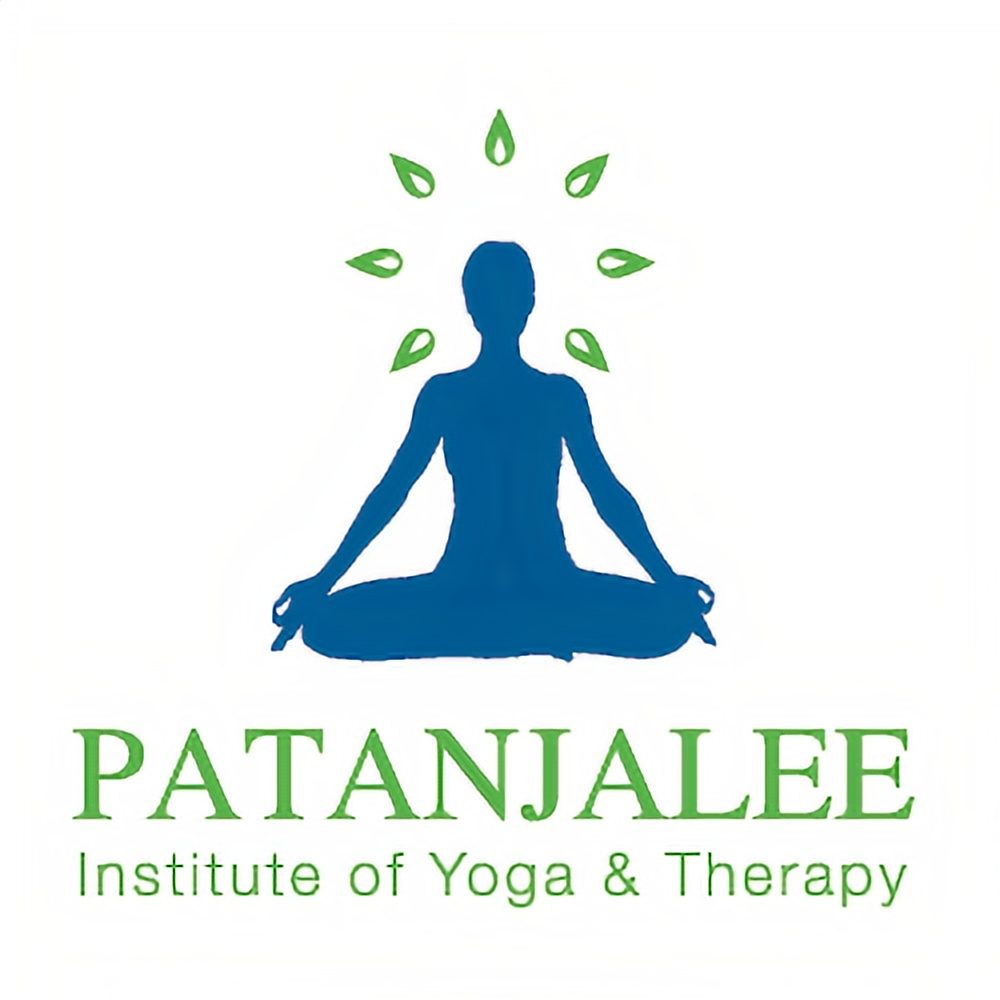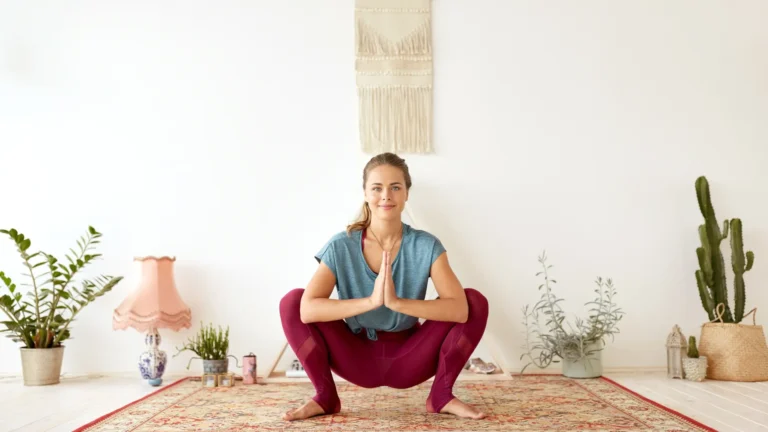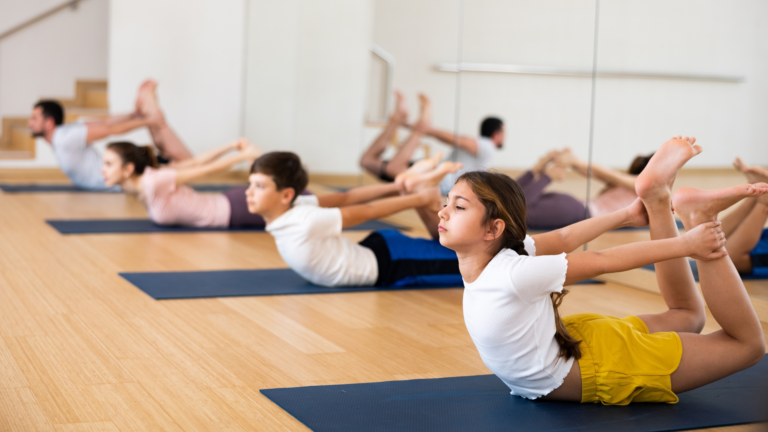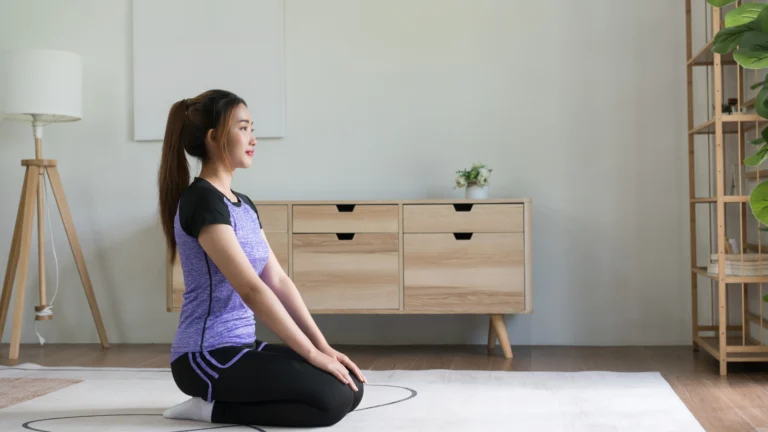ARDHA MATSYENDRASANA-The Half-Twist Posture: Steps and Benefits
In the bustling rhythms of modern life, where stress and sedentary habits often hold sway, the ancient practice of yoga emerges as a timeless sanctuary for holistic well-being. Among the myriad poses that grace the yogic landscape, Ardha Matsyendrasana, or the Half Lord of the Fishes Pose, stands out as a beacon of both physical vitality and spiritual rejuvenation. Rooted in the profound traditions of Hatha Yoga, this half-twist posture not only gracefully guides the body through a series of bends and turns but also acts as a conduit to delve into the intricate connection between the body and the mind.
Ardha Matsyendrasana is not merely a contortion of limbs; it is a profound exploration of the self—a union of breath, movement, and introspection. As we embark on this journey of exploration, let us unravel the layers of significance that shroud this ancient asana, discovering its origins, understanding the nuanced steps involved, and delving into the rich tapestry of physical, mental, and emotional benefits it bestows upon those who embrace its practice. Join online pregnancy yoga classes in the pursuit of unlocking the secrets to wellness as we unravel the transformative potential of Ardha Matsyendrasana.

Origins and Symbolism
Ardha Matsyendrasana finds its roots in the ancient tradition of Hatha Yoga. During meditation, Matsyendra, a mythical yogi and one of Lord Shiva’s first disciples, discovered this posture. The name itself is a fusion of “Ardha,” meaning half, “Matsyendra,” the legendary yogi, and “Asana,” denoting a yoga pose. Through the twisting motion, this asana symbolizes the ability to release toxins and negative energy.
Steps to Ardha Matsyendrasana
Step 1: Begin by sitting erect, extending your legs in front of you. Keep your heels together and place your palms on the floor beside your buttocks.
Step 2: Fold your right knee, tucking the heel against your perineum.
Step 3: Position your left foot near the right thigh, close to the knee.
Step 4: Gently wrap your right hand around the outer side of the left knee, passing it between your chest and the left knee. Reach down and grasp your left big toe. Your right shoulder blade should rest on the outer side of your left knee. Keep your trunk vertical.
Step 5: Now, take your left hand around your back, attempting to catch your right thigh. As you do this, look back over your left shoulder. The erect knee acts as a fulcrum for achieving maximum spinal twist.
Step 6: Release your left hand and return to the third step position.
Step 7: Slowly release your right hand over the outer side of your left knee and return to the second step position.
Step 8: Repeat the process by slowly releasing your right hand over the outer side of your left knee, returning to the second step position once more.
Step 9: Unfold your left leg and return to the initial sitting position.
Step 10: Finally, unfold your right leg and return to the initial sitting position.

What Tips Should One Keep in Mind?
Here are some tips for practicing Ardhamatsyendrāsana.
- Warm up before attempting the pose to prevent injury.
- Focus on maintaining proper alignment and a straight spine.
- Progress gradually from basic to advanced variations.
- Use yoga props like straps or blocks for assistance if needed.
- Coordinate your breath, exhaling during the twist and inhaling during the return.
- Practice mindfulness by staying present in the moment.
- Modify the pose to accommodate physical limitations or health concerns.
- Be consistent in your practice to experience long-term benefits.
- Take time to rest and recover after performing the asana.
- Always listen to your body; if you experience pain or discomfort, ease out of the pose.
Does Ardha Matsyendrasana Reduce Belly And Side Fat?
Ardha Matsyendrasana, or Half Lord of the Fishes Pose, is a yoga asana that involves twisting the spine, promoting flexibility and core strength. It’s good for your overall health, but it won’t magically make your belly or sides lose fat. To lose weight, you need a mix of things, like doing cardio exercises (running, cycling) and eating healthy. This yoga pose is like a bonus; it helps, but it’s not the whole solution. Always consult with professionals before starting a new fitness routine. Join online yoga classes and learn yoga in your comfort zone.
What Is The Duration Of Holding Ardha Matsyendrasana?
The duration of Ardha Matsyendrasana can vary based on your experience level. Beginners should start with 15-30 seconds on each side, gradually increasing to 30-60 seconds for intermediate practitioners. Advanced yogis can aim for 1-2 minutes or longer on each side. Prioritize proper alignment and comfort over the duration, and listen to your body to prevent strain or discomfort.

What Benefits Does Ardha Matsyendrasana Offer?
Cultural Benefits:
- Fosters spinal twists, tones, and stretches, promoting enhanced flexibility.
- Supports the overall well-being of spinal nerves.
- Provides a soothing massage to the spleen, liver, pancreas, intestines, and bladder.
- Activates the gonads, contributing to improved glandular health.
- Enhances the secretion of pancreatic juice and adrenaline for better metabolic function.
Therapeutic Advantages:
- Proves effective in addressing issues such as constipation, dyspepsia, diabetes, kidney problems, enlarged and congested liver and spleen, and rheumatism in the back muscles.
- Alleviates discomfort associated with hip joint pain, obesity, and gastritis.
Spiritual Benefits:
Ardha Matsyendrasana is like a magic move that not only stretches your body but also gives your spirit a cozy hug. When you twist, imagine letting go of stress and bad vibes, making room for good feelings. It’s like a dance that helps balance your energy, connecting your mind and body in a chill way. Ardha Matsyendrasana is a journey to find peace inside yourself, unlocking a happy place for your spirit. So, twist away and let the good vibes flow!
Mental and Emotional Well-Being Benefits
Stress Reduction:
The meditative quality of Ardha Matsyendrasana, combined with deep breathing, facilitates stress reduction. The twist releases tension held in the spine and shoulders, promoting a sense of relaxation.
Improved Concentration:
Yoga, including Ardha Matsyendrasana, encourages mindfulness. The focus required to maintain the pose can enhance concentration and bring a sense of mental clarity.
Energetic Flow:
Twisting poses in yoga are believed to stimulate the flow of energy (prana) in the body. Ardha Matsyendrasana, with its twisting action, may help balance energy levels and invigorate the entire system.
Also read: VAJRASANA – The Ankle Pose: Steps and Benefits
Who Should Avoid Practicing Ardha Matsyendrasana?
Ardhamatsyendrasana is not recommended for individuals with hernias or those who are prone to them. It’s crucial to be cautious and seek alternatives if you fall into this category, as the asana’s twisting motion may exacerbate the condition or lead to discomfort. Always prioritize your safety and well-being when deciding whether to incorporate Ardhamatsyendrāsana into your yoga practice.
Key Aspects of Ardha Matsyendrasana
Bending Technique: Avoid resting on your heels.
Breathing Approach: Exhale during the twisting phase and inhale when returning to the initial position. Maintain regular breathing in the final posture.
Conclusion
Incorporating the Ardha Matsyendrasana into your yoga practice can be a transformative experience, not only for the physical body but also for the mind and spirit. Embrace this ancient asana to nurture your spine, enhance your flexibility, and embark on a path toward greater vitality and self-realization. As you twist and turn, may you find the balance and harmony that Yogi Matsyendranath himself achieved through this remarkable pose.



